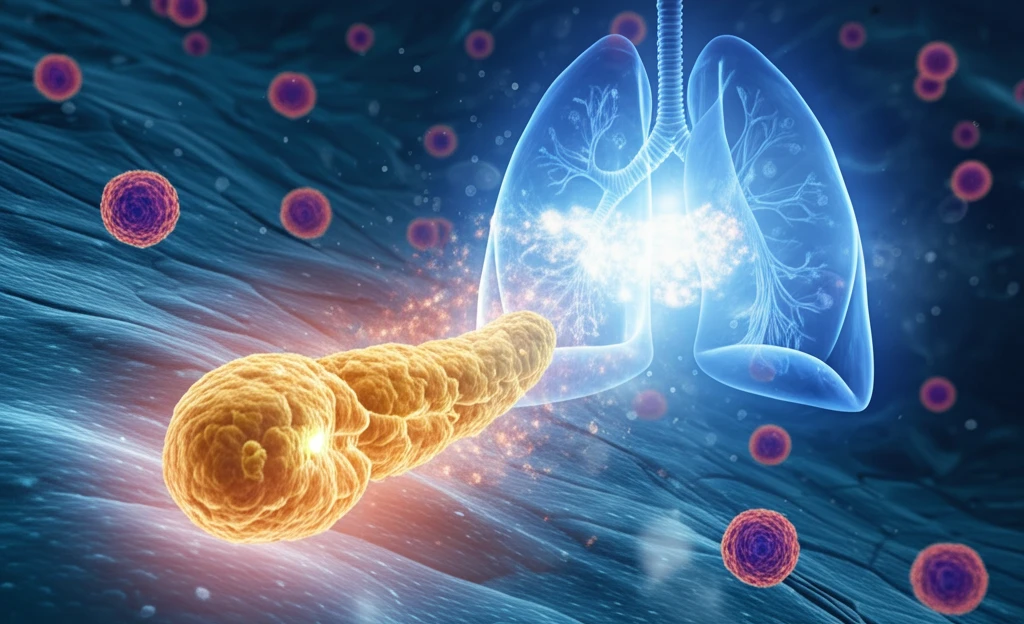
Cracking the Cancer Code: How a Lung Protein Could Stop Pancreatic Tumors in Their Tracks
"New research reveals the surprising power of surfactant protein D (SP-D) in suppressing the spread of pancreatic cancer by targeting a key process called epithelial-to-mesenchymal transition (EMT)."
Pancreatic cancer remains one of the most aggressive and challenging cancers to treat. With a dismal five-year survival rate, researchers worldwide are tirelessly searching for new ways to combat this disease. One promising avenue involves understanding and targeting the process of metastasis—how cancer cells spread from the primary tumor to other parts of the body.
A critical step in metastasis is the epithelial-to-mesenchymal transition (EMT). EMT allows cancer cells to break free from the original tumor, migrate, and invade new tissues. Scientists are working hard to identify factors that can block or reverse EMT, potentially halting the spread of cancer.
Now, a groundbreaking study is shedding light on an unexpected player in the fight against pancreatic cancer: a protein called surfactant protein D (SP-D). Normally found in the lungs, SP-D plays a key role in the immune system. Researchers have discovered that SP-D can suppress EMT in pancreatic cancer cells, potentially offering a new strategy to slow or stop the disease's progression.
How Does SP-D Stop Cancer Cells From Spreading?

The study, conducted by Anuvinder Kaur, Muhammad Suleman Riaz, Shiv K. Singh, and Uday Kishore, investigated the effects of a recombinant fragment of human SP-D (rfhSP-D) on pancreatic cancer cells. The results were remarkable: rfhSP-D effectively suppressed the invasive-mesenchymal properties of highly aggressive pancreatic cancer cells.
- Reduced TGF-β Expression: SP-D treatment significantly lowered the amount of TGF-β produced by pancreatic cancer cells.
- Interrupted Smad Signaling: SP-D disrupted the signaling pathway that TGF-β uses to communicate with the cell's nucleus, preventing the activation of genes that drive EMT.
- Downregulated Mesenchymal Genes: SP-D decreased the production of key proteins (Vimentin, Zeb1, and Snail) that are essential for EMT.
- Reduced Invasion: SP-D significantly reduced the ability of pancreatic cancer cells to invade through a membrane mimicking tissue.
What Does This Mean for the Future of Pancreatic Cancer Treatment?
This research opens exciting new possibilities for treating pancreatic cancer. By harnessing the power of SP-D to block EMT, scientists may be able to develop therapies that prevent the spread of the disease and improve patient outcomes. Further studies are needed to explore how SP-D can be effectively delivered to tumors and to identify patients who are most likely to benefit from this approach.
